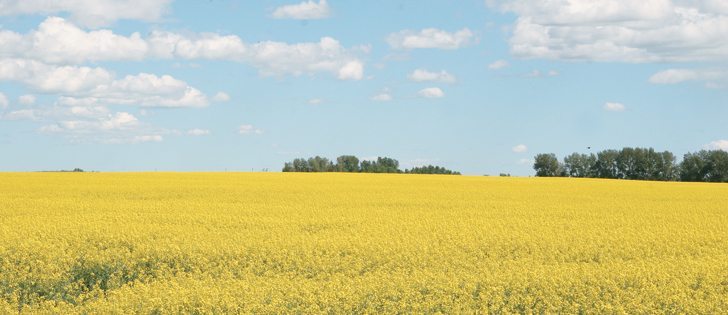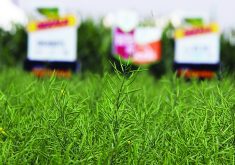Canola council changes policy | Researchers worry the new recommendations will lead to future troubles
There has been a seismic shift in agronomic philosophy at the Canola Council of Canada.
A group that once preached sticking to longer rotations now suggests that growing canola once every two years might not be a bad idea.
“Our best wisdom is changing, and growers are leading the way,” the council said in a document outlining the science behind its new target of producing 26 million tonnes per year of the oilseed by 2025.
“Growers have taught us that more intensive rotations can be managed sustainably and profitably in many soil zones and regions of the Prairies.”
Read Also

Farming Smarter receives financial boost from Alberta government for potato research
Farming Smarter near Lethbridge got a boost to its research equipment, thanks to the Alberta government’s increase in funding for research associations.
It is a significant departure for an association that in the past has warned growers against tightening their rotations.
“It is a bit of a surprise to me,” said Faye Dokken-Bouchard, a plant disease specialist with Saskatchewan Agriculture.
“It sounds like a bit of a shift.”
She believes growers should be sticking with the previous recommendation of a one-in-four year rotation.
“We still know the longer the rotation the better, just from a biological point of view,” said Dokken-Bouchard.
“Definitely from a disease perspective, I still recommend that growers put the breaks in there as long as they can.”
Alberta Agriculture crop specialist Harry Brook thinks the council may be resigned to the fact that growers have gone to a canola-wheat rotation regardless of what the experts tell them.
“They’re probably bowing to the inevitability of human nature,” he said.
Saskatchewan Agriculture data shows growers in northeastern crop districts seed half of their arable land to canola every year, which indicates they have embraced a one-in-two-year rotation.
“What’s the point of recommending something that is basically being ignored,” said Brook.
However, he takes issue with the claim that a one-in-two year rotation is sustainable.
“When it comes to blackleg, one of the worst things you can do is have a two-year rotation because it’s the second year after canola that the crop residue has the highest spore load for further infection,” said Brook.
If clubroot is in the area, the minimum rotation should be one canola crop every four years. Sclerotinia can also become a bigger problem for growers pushing rotations.
Crop insurance data shows that consistently growing canola back-to-back results in a 20 percent yield loss in the second year.
Patti Miller, president of the canola council, said canola-on-canola is a bad idea, but the break between crops may not have to be as long as once thought.
“The latest farm reported results indicate there is recovery of yield potential with just a one year break between canola crops,” she said.
“A break of two years gives you higher yield, but the difference in that rotation is quite marginal.”
She said the council no longer advocates a one-in-four rotation or any set rotation.
The new strategy is to help individual growers make decisions on their farms based on factors such as environment, soil type, risk tolerance and willingness to adopt new technologies.
“There’s no one global recommendation. It’s about what’s right for an individual farmer,” said Miller.
The council said intensive management practices can help growers mitigate the increased disease and insect pressure associated with tighter rotations.
Brook said a canola-wheat rotation may be sustainable in the short term, but it is risky for the long-term health of the agriculture industry.
“Is it sustainable into the future? Maybe, if you’re lucky for a little while. But I still think in the long term it is not a sustainable rotation,” he said.


















